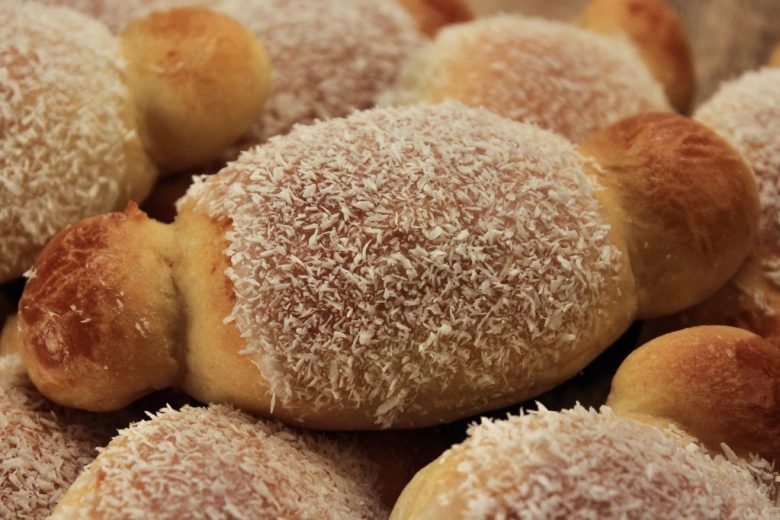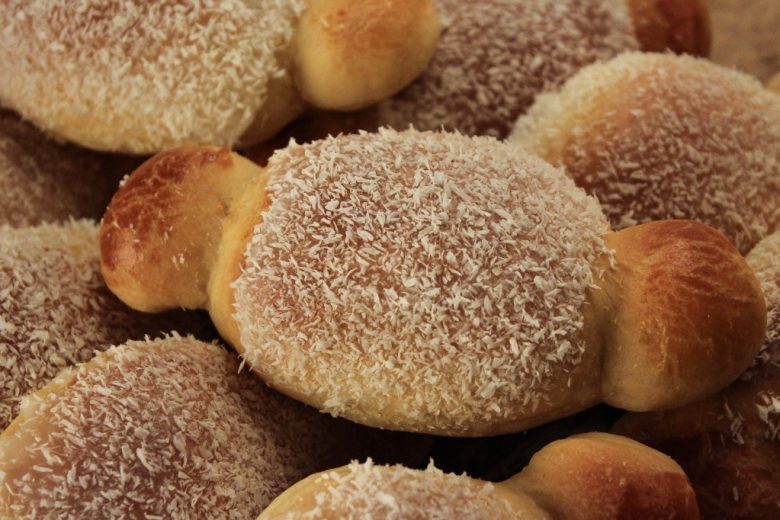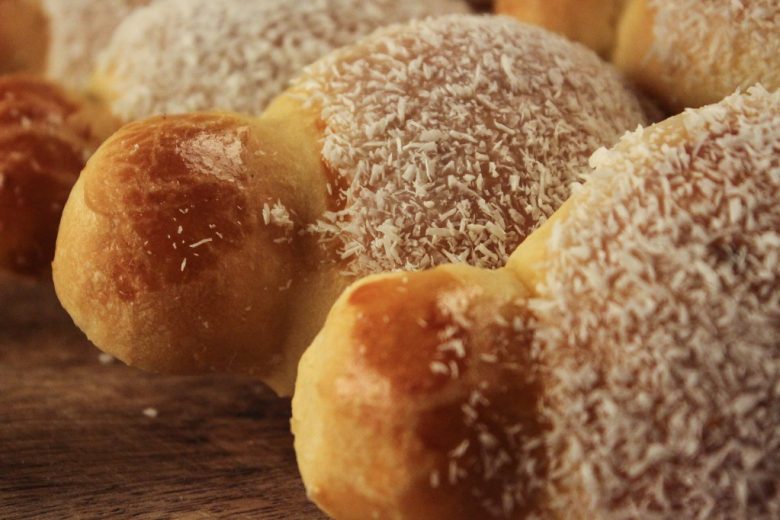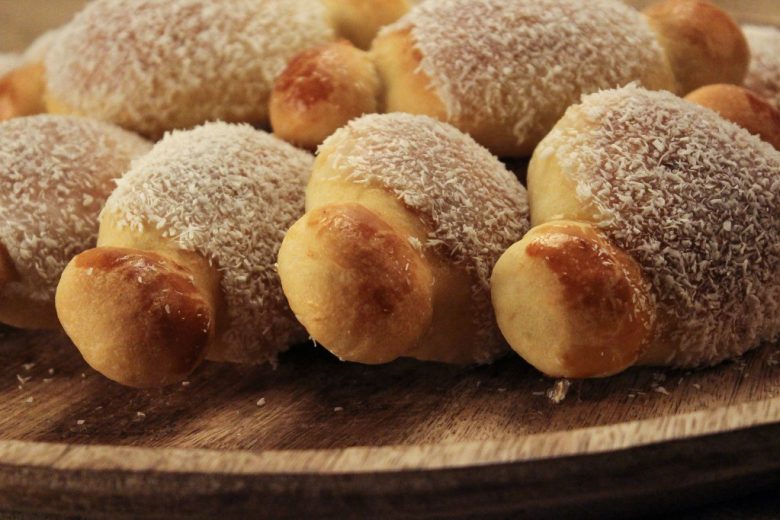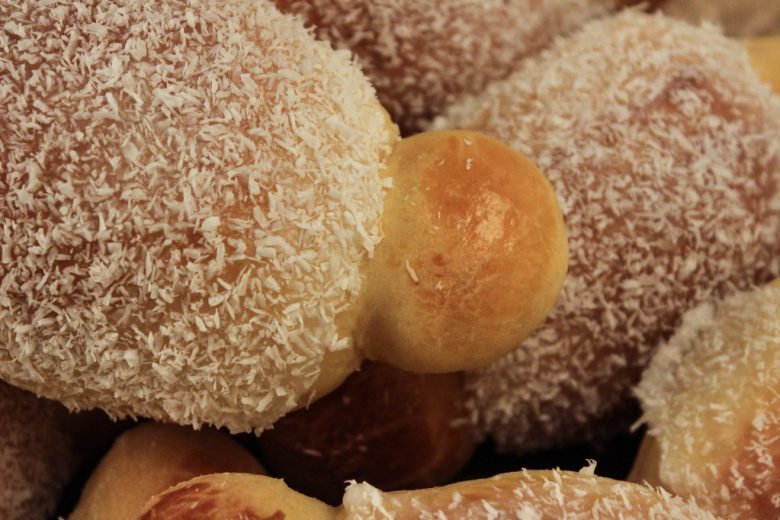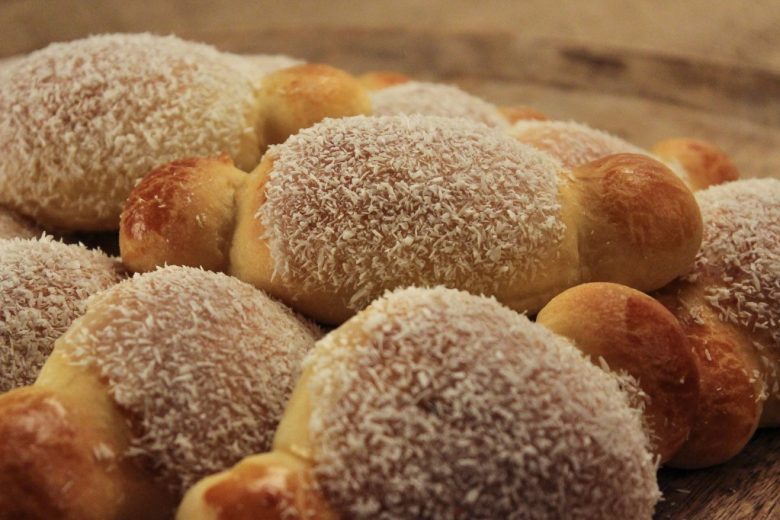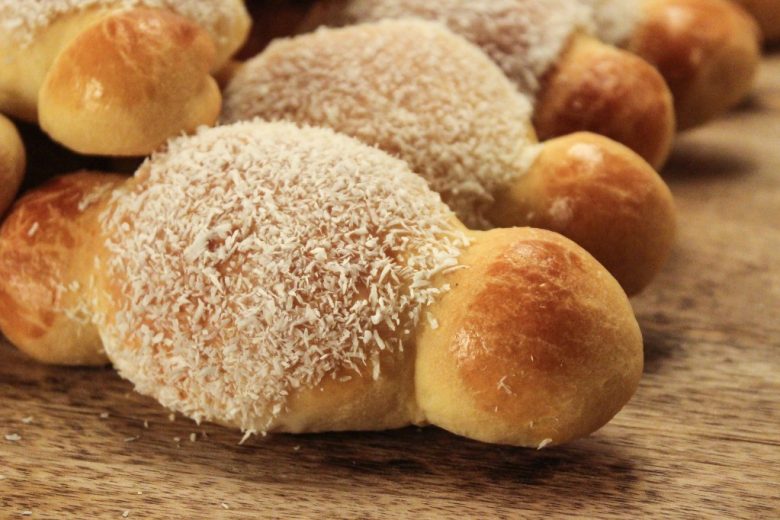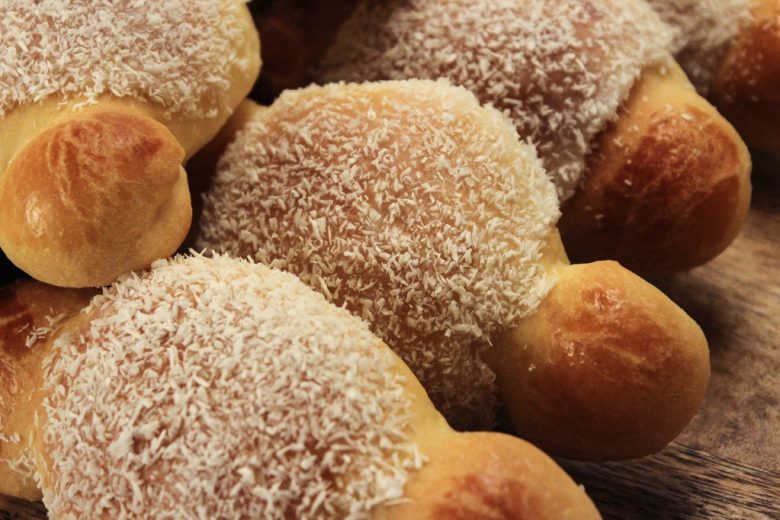Eskimos with Fondant and Coconut Flakes
These eskimos were one of the favorites from my apprentice days. Their simple production and finishing make these brioche pastries a real treat. Baked quickly, brushed with a glaze made from rum fondant and coated in coconut flakes they are a welcomed variation in any pastry kitchen.
For some time I have been asked about how to make fondant. This recipe is the perfect time to describe the production of this particular type of sugar glaze
Production of fondant
Fondant is a boiled sugar solution. Kneading it creates a soft, pliable white sugar mass.
Usage:
- for fondant glazes
- for cream fillings of pralines
- for fondant figures
Production:
1. Boiling the sugar solution
- 400g sugar is dissolved in 200g water
- The solution is boiled. This must be carefully stirred together (keep the edge of the pot clean) and skimmed off.
- At 113 ° C, 10% syrup (based on sugar weight) is added. (Syrup promotes the fluidity of the fondant)
- The fondant is fully cooked at 118 ° C
- The finished boiled solution is “quenched” by dipping the pot in cold water. This prevents the solution from “residual cooking” on the sides of the pot.
- The solution is cooled to 37 ° C by either leaving it in the kettle or pouring it onto a marble plate (stone countertop).
- The surface of the solution should be wetted with water (in this way, no sugar crystals can form on the surface, despite strong water evaporation).
2. Kneading
- The sugar solution, cooled to approx. 37 ° C, is kept in motion and constantly stirred (this means that no large, but only small, tiny sugar crystals can form).
- Kneading can be done with a hand spatula or in a kneading machine (kneading hook).
- In the first phase of kneading, the sugar solution initially becomes milky and then later glossy white. It becomes firm, brittle and dry and loses its shine. (The white color of the fondant is caused by the fact that the sugar crystals are shifted in their crystalline structure by the kneading).
- Beyond this “solidification point” you must continue to knead until the solution becomes soft and pliable again and regains its shine.
3. Glazing with fondant:
- The fondant may only be warmed up to body temperature (37 ° C) (at higher temperatures the sugar crystals are dissolved. When the fondant cools down, they crystallize out. This means that the fondant loses its white color and becomes glassy).
- The fondant may only be applied to Danish pastries that have previously been coated with cooked jam (apricot glaze). If the pastry is not coated with jam beforehand, the fondant “dies”, i.e. it loses its shine. This is because the dry and therefore absorbent pastry crust removes part of the water from the fondant. This leads to the formation of coarse sugar crystals.
The fondant can be flavored with various flavors or fruit juices when it is heated. If the fondant is still too thick when applied to the pastry, it can be diluted with a little water (egg white is also used by pastry chefs to thin it out).
Instructions for Eskimos:
- Form pieces of brioche dough (70-80g) into rolls and place onto a tray with plenty of space between.
- Once ¾ proofed, brush the dough with egg and bake briefly at 210°C without steam (about 8-9 min).
- After cooling, cover with sugar glaze or fondant and coat with coconut flakes.


